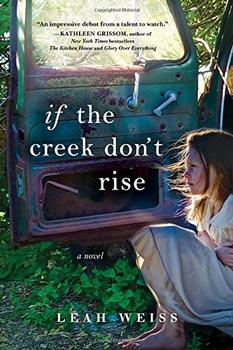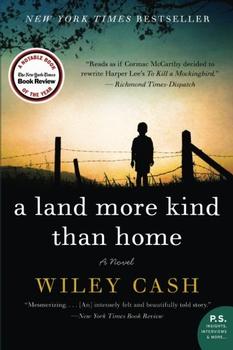Summary | Excerpt | Reading Guide | Reviews | Beyond the book | Read-Alikes | Genres & Themes | Author Bio

Named for a flower whose blood-red sap possesses the power both to heal and poison, Bloodroot is a stunning fiction debut about the legacies—of magic and madness, faith and secrets, passion and loss—that haunt one family across the generations, from the Great Depression to today.
The novel is told in a kaleidoscope of seamlessly woven voices and centers around an incendiary romance that consumes everyone in its path: Myra Lamb, a wild young girl with mysterious, haint blue eyes who grows up on remote Bloodroot Mountain; her grandmother Byrdie Lamb, who protects Myra fiercely and passes down “the touch” that bewitches people and animals alike; the neighbor boy who longs for Myra yet is destined never to have her; the twin children Myra is forced to abandon but who never forget their mother’s deep love; and John Odom, the man who tries to tame Myra and meets with shocking, violent disaster. Against the backdrop of a beautiful but often unforgiving country, these lives come together—only to be torn apart—as a dark, riveting mystery unfolds.
With grace and unflinching verisimilitude, Amy Greene brings her native Appalachia—and the faith and fury of its people—to rich and vivid life. Here is a spellbinding tour de force that announces a dazzlingly fresh, natural-born storyteller in our midst.
Bloodroot presents a range of voices by weaving together narratives from Myra Lamb's family. Author Amy Greene prevents the narratives from sprawling like kudzu by organizing them into paired sections, allowing characters to alternate speaking in groups of two. The result is a dynamic, layered effect that allows the reader to sink progressively deeper into the Lamb family, as opposed to the traditional approach of going forward through a linear plot progression... While stylistic parallels to Wordsworth's daffodils are evident throughout the novel, Greene's characters function with independence and resolution that bring the American transcendentalists - Emerson, Thoreau - more readily to mind. Bloodroot works at a slower, heavier pace than Fannie Flagg's Fried Green Tomatoes or Rebecca Wells' Divine Secrets of the Ya-Ya Sisterhood, and readers that enjoyed Charles Frazier's Cold Mountain will find pleasure in Bloodroot's pages...continued
Full Review
(494 words)
This review is available to non-members for a limited time. For full access,
become a member today.
(Reviewed by Elizabeth Whitmore Funk).
 Characters in Bloodroot rely on William
Wordsworth's poetry as a source of comfort and inspiration, but echoes of
his literary philosophy and poetic interests can also be found in the
pages of Amy Greene's novel.
Characters in Bloodroot rely on William
Wordsworth's poetry as a source of comfort and inspiration, but echoes of
his literary philosophy and poetic interests can also be found in the
pages of Amy Greene's novel.
Just as Bloodroot relies on memory to tell its stories, much of Wordsworth's poetry focuses on capturing moments of memory and recollection. He developed a philosophy of "two consciousnesses": himself in the present and himself in the past, and a lot of his poetry sought to identify the discrepancy between these two. Whereas Marcel Proust, in his exhausting account, In Search of Lost Time, pursues the depth of memory through the taste of his madeleine cookie, Wordsworth's poetry explores the disjuncture between what is ...
This "beyond the book" feature is available to non-members for a limited time. Join today for full access.

If you liked Bloodroot, try these:

by Leah Weiss
Published 2017
With a colorful cast of characters that each contribute a new perspective, If The Creek Don't Rise is a debut novel bursting with heart, honesty, and homegrown grit.

by Wiley Cash
Published 2013
A mesmerizing literary thriller about the bond between two brothers and the evil they face in a small western North Carolina town.